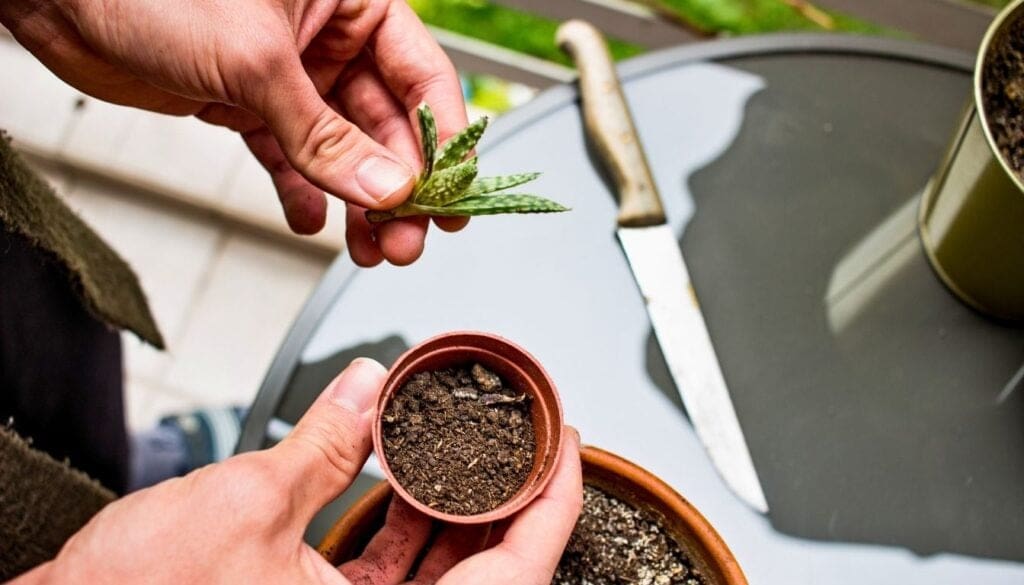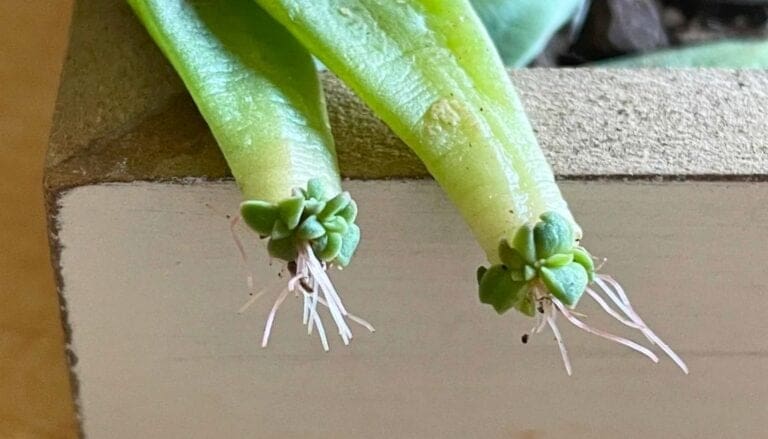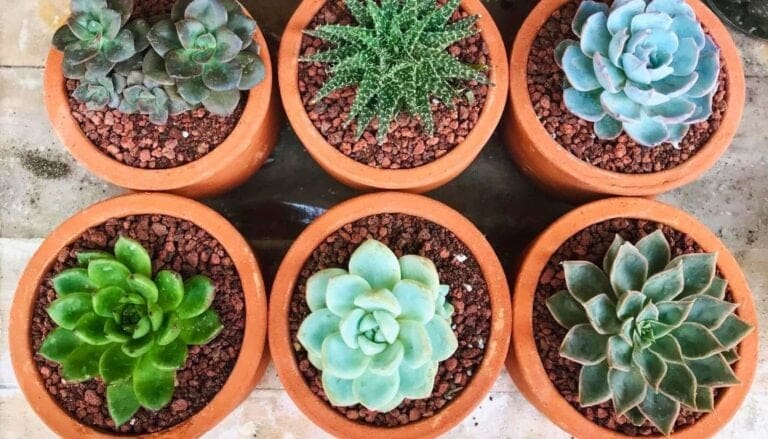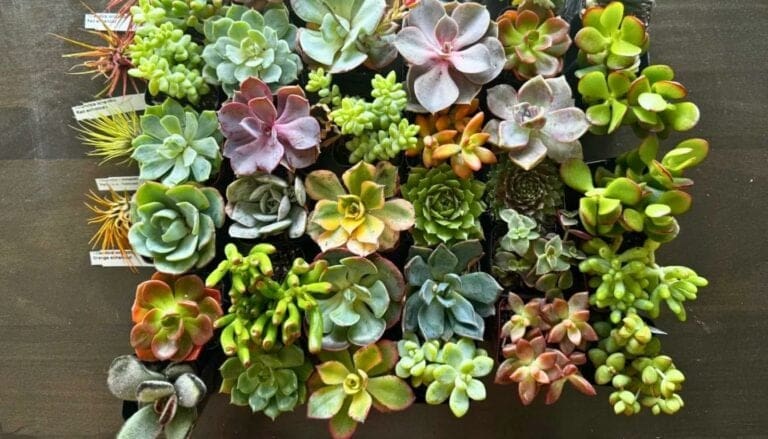7 Tips to Trim Overgrown Succulents: Master Your Indoor Jungle
Succulents are amazing plants that can completely brighten up a room. 🌵 They come in all sorts of shapes and sizes, and it feels so rewarding to watch them grow over time.
But what do you do when your lovely plants start to get a little too wild? It can be tricky to manage those sprawling leaves and stems without causing harm.
I’ve found that keeping succulents neat and tidy doesn’t have to be difficult.
Whether you’re a plant newbie or a seasoned plant parent, boosting those pruning skills can make all the difference.
Are you ready to give your leafy friends a fresh look?
Grab your gardening shears, and let’s dive into it together!
Share your adventures in plant trimming in the comments below. 🌿✂️
Please note: Simplify Plants is reader-supported. As an Amazon Associate, I earn from qualifying purchases made by our readers with no extra cost added to you all! Some links in the post are affiliate links and I get a commission from purchases made through links in the post.
1) Prune Dead Leaves
Let’s talk about pruning those dead leaves on our succulents! 🌿 It’s honestly like giving a haircut to your plants. Dead leaves can make your succulents look untidy, and who wants that?
First, I grab my trusty pair of scissors.
I carefully trim away any brown or shriveled leaves. ✂️ This helps the plant stay healthy and look fresh. Have you tried this yet?
I always feel like a plant stylist when doing this!
Make sure to cut close to the stem but avoid nicking it. This detail ensures that the rest of the plant isn’t harmed.
Pruning not only improves looks; it also stops rot from spreading. Think of it as a cleanup session! Pretty neat, right? 😊
Sometimes, I notice the plant looks so much happier afterwards. It’s like it can finally breathe again.
Remember, each leaf removed is one less home for pests, too. Bugs love hiding in dead leaves. Does anyone else picture tiny pest hotels? Creepy!
It’s super important to keep my tools clean after each use. This helps stop spreading any germs or pests from one plant to another.
I always feel so accomplished once my succulents are neat and tidy!
Do you have special pruning tricks you use? I’d really love to hear about them! Feel free to share your succulent stories in the comments below. 🌱😊✨
2) Use sharp, clean shears
Have you ever tried trimming a plant with dull scissors? It’s like trying to cut a steak with a butter knife! 🌵
For trimming succulents, I always use sharp, clean shears. It makes the process smoother and prevents damage to the plant.
I keep a favorite pair of garden shears just for this. Want to know why?
Dull blades can crush the stems instead of cutting them. This leaves the plant vulnerable to disease. Besides, no one likes jagged cuts! 😅
Clean shears are a must too. Dirty tools can spread fungus or bacteria from one plant to another.
I wipe mine down with rubbing alcohol or a weak bleach solution between uses. Do you have a cleaning routine for your garden tools?
Ever wonder why your succulent doesn’t look as vibrant after a trim? Blame dirty tools!
Over time, you’ll see the difference when you start using carefully maintained shears.
It’s also rewarding to hear that crisp, clean snip when you cut with sharp blades. It’s like music for my garden-loving ears. 🎶 Is it just as satisfying for you?
Got any funny stories about gardening bloopers? We’ve all been there!
Share your tips or blunders in the comments. I’d love to hear from you. 🌼 Let’s swap stories about our succulent adventures!
3) Cut back leggy stems

Oh, those leggy stems! Ever notice how some succulents stretch out more than a teenager trying to reach the top shelf? 🌱 It’s time to give them a haircut.
I like to grab my sharp scissors and start trimming the long, stretched-out stems.
Cutting them back helps the plant focus its energy, making it bushier and more compact. Have you tried this?
I usually cut just above a leaf node. This helps the plant grow new branches from there. It’s like giving your succulent a fresh start. ✂️
Don’t worry about cutting too much. Succulents are quite resilient!
By removing the leggy bits, I find my succulents look so much healthier. Do you feel the same after trimming yours?
After trimming, I let the cuttings dry for a day or two before planting them as new succulents! It’s like getting a two-for-one deal. 🌿
Remember to share your trimming tips in the comments! I’d love to know how you handle those leggy stems. ❤️
4) Leave some stem for regrowth
When trimming succulents, I always leave a bit of stem. It’s like giving them a chance to bounce back! 🪴 If you cut too close, the plant might struggle to grow again.
Think of it like a haircut. Ever had a bad one that was too short? The extra stem is the plant’s version of a safety net. It has some room to sprout new leaves or branches.
When I cut the stem, I usually leave about an inch or two. What about you? Do you have a specific method? I’d love to hear your thoughts!
Keeping some stem also helps prevent the plant from looking too stubby. It blends with the rest of the plant as it grows. This makes your succulent look more natural and healthy.
Have you ever noticed how plants can surprise you? Just when you think they’re done, they find a way to come back.
It’s always exciting to see those new little leaves! 🌿
Do you have any tips or tricks for regrowing your succulents? Sharing ideas can be so inspiring for everyone! Let’s chat in the comments. 👇
5) Replant trimmed sections

After giving my succulents a little haircut, I like to save those trimmed bits for planting. Sounds like fun, right? 🌱 Even if you’re not a gardening pro, this is a simple step you can try!
First, I let the cut sections dry for a few days. This helps the ends heal before they go into the soil. Think of it as giving them a little rest. Plus, it helps prevent rot when they’re replanted.
I pick small pots with drainage holes. Good drainage is key for these tough little plants!
I use cactus soil, which gives them the right balance of air and water.
Don’t have cactus soil? No worries, you can make your own by mixing regular potting soil with some sand or perlite. 😊
I gently place the trimmed pieces into the soil. Just a little push so they’re snug. They don’t need to go deep—just enough to stand upright.
Have you ever tried making a mini succulent garden? It’s a cool way to use those trim pieces creatively.
Watering is light at first. Too much water can be tricky for new plants. So, I water only when the soil feels dry.
Now, it’s time to see the magic happen! Watching these cuttings turn into full-fledged plants is like watching a miracle unfold. 😊
Do you have any tips or experiences with replanting succulent trimmings? Share in the comments below—I’d love to hear!
Happy planting! 🪴
6) Use Rooting Hormone
I love how plants can grow from just a little cutting! 🌱 When it comes to succulents, they might need a bit of a boost to start rooting. This is where rooting hormone comes in handy. It helps those tiny cuttings grab onto life and grow strong.
Do you ever wonder why some plants just sit there after being planted? Sometimes they need an extra push.
I sprinkle a little rooting hormone on the cut end before planting. It acts like a supercharger for the plant, helping it grow roots faster. Have you tried it before?
Rooting hormone is easy to use. Just dip the cut end of the succulent into the powder, like you’re dusting a donut with sugar. 🍩 But this is sugar for your plants!
It’s amazing how a small step like this can make such a difference.
What’s your trick for getting succulents to root? Do your plants seem happier when you use rooting hormone, too? 😊
Share your stories in the comments. It’s always fun to learn new tips and tricks from other succulent lovers!
If you’re experimenting with overgrown succulents, give rooting hormone a try. I’d love to hear how it works for you! Don’t forget to encourage others to join our chat by tagging them! 🌵
7) Water sparingly post-trim

After trimming my succulents, I always ease up on the watering. These plants are pretty tough and can do just fine with less water.
Have you ever given your plants too much water and noticed they didn’t look so happy afterward? 🌱
Right after a trim, succulents need a little time to heal. Giving them too much moisture can actually hurt them.
When in doubt, I like to let the soil fully dry out before giving them a drink.
Isn’t it amazing how patient these plants can be?
Once I started watering my succulents only when the soil was totally dry, I noticed they stayed healthier and happier. Who knew “less is more” could be true in gardening too?
If you notice your succulents’ leaves getting all squishy, it could be a sign of overwatering.
At that point, I know it’s time to back off a bit. Have you experienced this too? Share your stories below, please! 😊
Remember, watering sparingly doesn’t mean never watering. It’s more about finding that balance.
Try checking the soil every week, and only water when it doesn’t feel damp.
Let’s chat in the comments: What’s your favorite way to remember when to water your succulents? I’m always on the lookout for new tips! 📝
Understanding Succulent Growth

Succulents have become a favorite for many plant lovers. Their ability to thrive in low-water conditions and unique shapes make them special. Let’s explore what influences their growth and how to spot when they’re overgrowing.
Factors Influencing Growth
Succulents are pretty adaptable, but their growth is impacted by a few key factors.
First, sunlight is crucial. These plants love bright, indirect sunlight. If they don’t get enough, they can become leggy. In contrast, too much direct sun can cause sunburn.
Water is another critical factor. I’ve learned that watering too much can lead to root rot.
Yikes! It’s best to let the soil dry out between watering.
Temperature also plays a role. Most succulents prefer warm conditions. A chilly draft can stunt growth, so watch where you place them.
Do you have any special tricks to boost their growth? 🌱💧
Common Signs of Overgrown Succulents
Noticing your succulents are getting a bit too big for their planters? 🤭
Some signs can help you figure out if they need trimming.
One easy-to-spot sign is stretching towards the light. If they look taller and spaced out, they want more sun!
Another clue is when leaves begin drooping. Heavy tops and crowded leaves may signal overgrowth.
If roots are poking out of the bottom, the plant might have outgrown its pot. If your succulent looks more spindly than usual, it might be time for some care.
Does your plant exhibit any of these signs? Let me know below! 😊🌿
Trimming Techniques

Got an overgrown succulent? I’ve been there! Trimming helps them stay healthy and look amazing. Let’s go through the tools you need and the steps to get the job done right.
Tools You’ll Need
First things first, you’ll need sharp scissors or garden shears. These make clean cuts and prevent damage.
Always disinfect your tools with rubbing alcohol to avoid spreading any plant diseases. Trust me, it’s worth the extra minute!
A small brush is perfect for cleaning up any fallen leaves or dust.
Don’t forget a towel or mat for easy cleanup—succulents can get messy.
Gloves are handy, too, especially with those prickly types.
Having the right tools makes all the difference.
What tools do you use? Let me know in the comments! ✂️🌿
Step-by-Step Trimming Guide
Start by finding the overgrown or tangled stems. These are your targets.
Hold the stem with one hand, and with the other, use your shears to cut just above a leaf node. This encourages new growth! 🌱
Next, look for brown or dying leaves. These need to go!
Gently pull them off or cut them close to the base. Sometimes, you’ll find leaves hiding underneath.
Remember, don’t cut more than a third of the plant in one session.
Succulents thrive on attention, but too much can stress them out! Have you ever overtrimmed? Share your story and tips below. 🤔
Frequently Asked Questions
Sometimes, succulents get a bit wild and need a haircut. Here, I’m diving into how to keep them looking their best. 🌵✂️ Let’s get those succulents back in shape together!
How do you prune overgrown succulents?
I always start by removing dead leaves. This gives the plant some fresh air.
Then, I use sharp, clean shears to carefully trim back those long stems. The key is cutting just above the leaf nodes to help new growth.
Can you take cuttings from succulents that have become too tall?
Yes, you can! It’s like giving your succulents a little makeover.
Take a top cutting of about 3-4 inches and let it callous for a few days. Then, you can plant it back in soil. Easy peasy! 🌱
When is the best time to trim succulents, and how often should you do it?
I find that spring and early summer are the best times to prune. This is when succulents are in their growing phase.
As for how often, once or twice a year usually works just fine. Have you noticed your plants growing too fast?
What should you do with the cuttings after pruning your succulents?
After pruning, it’s time to get creative! 🌿
I like to replant the cuttings in small pots or give them away to friends. They make great gifts. What do you usually do with your extra plants?
How can you ensure that a succulent grows back healthily after you cut the top off?
After trimming, I make sure to leave a bit of stem for regrowth.
It’s crucial to not water the plant right away. Let it heal for a week or two and then give it a gentle drink.
Patience is key here!
What are the signs that indicate a succulent needs to be trimmed or pruned?
If your succulents start looking a bit like they’re doing yoga, stretching towards the light, then it’s time for a trim. 😄
Wilting leaves and long, leggy stems are big indicators that they need some attention.
What’s more, maybe they’ve outgrown their space.
Have you seen any of these signs in your plants lately? Feel free to share your trimming tales in the comments! 🌟
Note: Some images in the articles are sourced from Reddit and Other Platforms For Reference Purpose.







